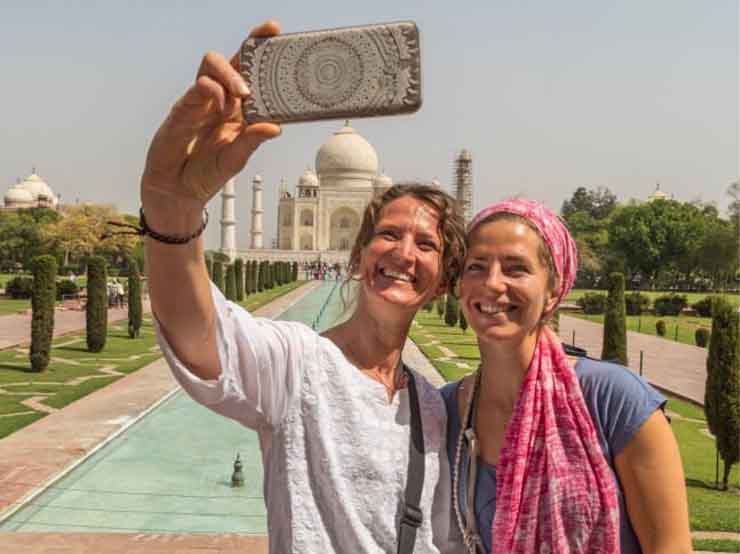The Taj Mahal stands as one of the greatest symbols of love and artistry. Beyond its white domes and shining marble, one feature draws visitors closer—the intricate inlay work. This detail transforms plain stone into vibrant patterns, flowers, and calligraphy.
The Art of Pietra Dura
The style of inlay is called pietra dura, or parchin kari in India. Craftsmen carved grooves into the marble and pressed polished stones inside. They used jade, jasper, carnelian, turquoise, and lapis lazuli for their color and strength. The marble surface stayed smooth, as if the stones had always belonged there.
Each design required steady hands and sharp eyes. Mughal artisans worked with great patience, and their efforts still shine centuries later.
Symbolism in the Designs
Every pattern carries meaning. Floral motifs reflect the paradise garden, a central theme in Islamic art. These flowers suggest peace, eternity, and divine beauty.
Black marble calligraphy decorates the walls with verses from the Quran. The letters guide visitors to reflect on the spiritual purpose of the Taj Mahal. Together, these designs reveal Shah Jahan’s dream of a resting place for Mumtaz Mahal that echoed heaven itself.
Lasting Beauty Through Craft
The strength of this work lies in its materials and precision. Semi-precious stones keep their color over time. Because artisans set them so carefully, the designs remain firm through heat, rain, and centuries of change.
Light adds even more magic. At sunrise, the inlays glow with warmth. Under the moon, they shimmer softly. Every moment shows a new side of the monument.
See the Art Up Close
Photos cannot replace the real experience. When you stand near the walls, you notice carnelian petals glowing like fire and onyx letters flowing with elegance. Each detail invites you to pause and admire.
Plan your trip to Agra and see the Taj Mahal’s artistry with your own eyes. Book your tickets quickly and securely at Ticketstajmahal.com and step into a masterpiece of love and craft.










Comment (0)